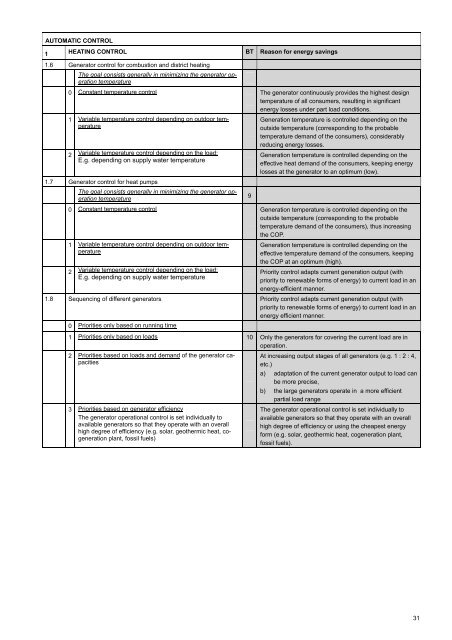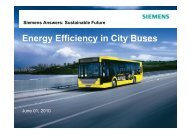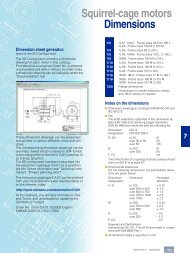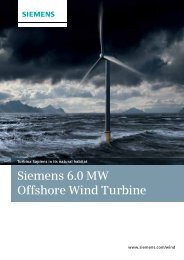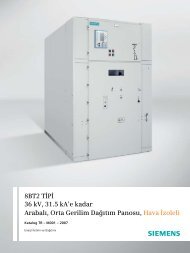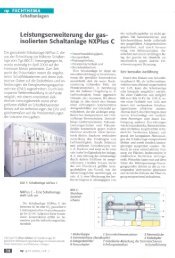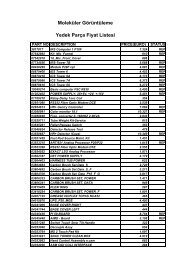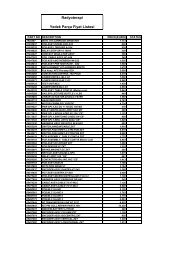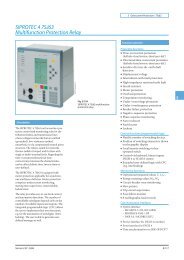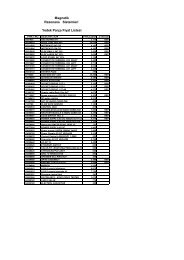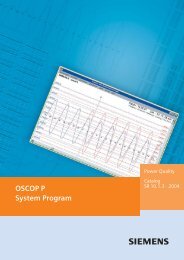Building automation â impact on energy efficiency - Siemens ...
Building automation â impact on energy efficiency - Siemens ...
Building automation â impact on energy efficiency - Siemens ...
You also want an ePaper? Increase the reach of your titles
YUMPU automatically turns print PDFs into web optimized ePapers that Google loves.
AUTOMATIC CONTROL<br />
1 HEATING CONTROL BT Reas<strong>on</strong> for <strong>energy</strong> savings<br />
1.6 Generator c<strong>on</strong>trol for combusti<strong>on</strong> and district heating<br />
The goal c<strong>on</strong>sists generally in minimizing the generator operati<strong>on</strong><br />
temperature<br />
0 C<strong>on</strong>stant temperature c<strong>on</strong>trol The generator c<strong>on</strong>tinuously provides the highest design<br />
temperature of all c<strong>on</strong>sumers, resulting in significant<br />
<strong>energy</strong> losses under part load c<strong>on</strong>diti<strong>on</strong>s.<br />
1 Variable temperature c<strong>on</strong>trol depending <strong>on</strong> outdoor temperature<br />
2 Variable temperature c<strong>on</strong>trol depending <strong>on</strong> the load:<br />
E.g. depending <strong>on</strong> supply water temperature<br />
1.7 Generator c<strong>on</strong>trol for heat pumps<br />
The goal c<strong>on</strong>sists generally in minimizing the generator operati<strong>on</strong><br />
temperature<br />
9<br />
Generati<strong>on</strong> temperature is c<strong>on</strong>trolled depending <strong>on</strong> the<br />
outside temperature (corresp<strong>on</strong>ding to the probable<br />
temperature demand of the c<strong>on</strong>sumers), c<strong>on</strong>siderably<br />
reducing <strong>energy</strong> losses.<br />
Generati<strong>on</strong> temperature is c<strong>on</strong>trolled depending <strong>on</strong> the<br />
effective heat demand of the c<strong>on</strong>sumers, keeping <strong>energy</strong><br />
losses at the generator to an optimum (low).<br />
0 C<strong>on</strong>stant temperature c<strong>on</strong>trol Generati<strong>on</strong> temperature is c<strong>on</strong>trolled depending <strong>on</strong> the<br />
outside temperature (corresp<strong>on</strong>ding to the probable<br />
temperature demand of the c<strong>on</strong>sumers), thus increasing<br />
the COP.<br />
1 Variable temperature c<strong>on</strong>trol depending <strong>on</strong> outdoor temperature<br />
2 Variable temperature c<strong>on</strong>trol depending <strong>on</strong> the load:<br />
E.g. depending <strong>on</strong> supply water temperature<br />
Generati<strong>on</strong> temperature is c<strong>on</strong>trolled depending <strong>on</strong> the<br />
effective temperature demand of the c<strong>on</strong>sumers, keeping<br />
the COP at an optimum (high).<br />
Priority c<strong>on</strong>trol adapts current generati<strong>on</strong> output (with<br />
priority to renewable forms of <strong>energy</strong>) to current load in an<br />
<strong>energy</strong>-efficient manner.<br />
1.8 Sequencing of different generators Priority c<strong>on</strong>trol adapts current generati<strong>on</strong> output (with<br />
priority to renewable forms of <strong>energy</strong>) to current load in an<br />
<strong>energy</strong> efficient manner.<br />
0 Priorities <strong>on</strong>ly based <strong>on</strong> running time<br />
1 Priorities <strong>on</strong>ly based <strong>on</strong> loads 10 Only the generators for covering the current load are in<br />
operati<strong>on</strong>.<br />
2 Priorities based <strong>on</strong> loads and demand of the generator capacities<br />
3 Priorities based <strong>on</strong> generator <strong>efficiency</strong><br />
The generator operati<strong>on</strong>al c<strong>on</strong>trol is set individually to<br />
available generators so that they operate with an overall<br />
high degree of <strong>efficiency</strong> (e.g. solar, geothermic heat, cogenerati<strong>on</strong><br />
plant, fossil fuels)<br />
At increasing output stages of all generators (e.g. 1 : 2 : 4,<br />
etc.)<br />
a) adaptati<strong>on</strong> of the current generator output to load can<br />
be more precise,<br />
b) the large generators operate in a more efficient<br />
partial load range<br />
The generator operati<strong>on</strong>al c<strong>on</strong>trol is set individually to<br />
available generators so that they operate with an overall<br />
high degree of <strong>efficiency</strong> or using the cheapest <strong>energy</strong><br />
form (e.g. solar, geothermic heat, cogenerati<strong>on</strong> plant,<br />
fossil fuels).<br />
31


